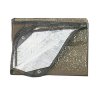You are using an out of date browser. It may not display this or other websites correctly.
You should upgrade or use an alternative browser.
You should upgrade or use an alternative browser.
Warming of IV fluids with MRE heater
- Thread starter kaja
- Start date
I've done that a lot as long as I had time to actually warm the fluid or if I was responding to a mass-cas. A consideration to this is the length of travel for the fluid through the IV tubing can rapidly cool the fluid. If my thermal angel was too bulky to carry or simply not allowable by weight, I would wrap the IV tubing around the guy's arm and wrap it with coban to create a slight warming effect prior to entry.My first thought is to simply carry the bag against your body... Simple fix.
That is the main concern as to why I would consider an MRE heater as a last ditch effort.Using an MRE heater could lead to fluids being too warm and potentially harming the patient.
The best practice, that I found was to use a space blanket and wool blankets, sewn together, with air-reactive heating blankets underneath the patient. Regardless of fluid temp, the patients body was being heated effectively and seemed to provide the best outlook.
kaja
Verified Military
to use a space blanket and wool blankets, sewn together
OK, we do use space blankets (or blizzard, helios, whatever) in conjunction with normal blankets/ sleeping bags/..., but I never heard of sewing them together. Can you please elaborate on this a bit? I would assume that any kind of sewing would make the space blanket tear :/
Last I checked CLS's were not allowed to administer IV fluid. Has this changes back? Also, by the time you are to the point in your treatment where IV fluids are needed you prolly would have had about 20 mins to warm them next to a body.
I'm pretty sure Marine Corps CLS still teaches and allows IVs.
arch_angel
Verified Military
I'm pretty sure Marine Corps CLS still teaches and allows IVs.
Sir, I recently completed the CLS course myself. To our disappointment IV's are no longer in the curriculum.
Sent from my DROID RAZR using Tapatalk 2
pardus
Verified Military
- Joined
- Sep 7, 2006
- Messages
- 10,533
OK, we do use space blankets (or blizzard, helios, whatever) in conjunction with normal blankets/ sleeping bags/..., but I never heard of sewing them together. Can you please elaborate on this a bit? I would assume that any kind of sewing would make the space blanket tear :/
I'm guessing it's one of the heavy duty space blankets, like this...

policemedic
Verified SWAT
Sir, I recently completed the CLS course myself. To our disappointment IV's are no longer in the curriculum.
Sent from my DROID RAZR using Tapatalk 2
Trust me, it's a good thing. Concentrate on stopping bleeding and staying in the fight.
ExactlyI'm guessing it's one of the heavy duty space blankets, like
kaja
Verified Military
Thanks Pardus and J, I never saw these before.
Cback, that means no crystalloid at all, or just during hypotensive resuscitation?We no longer even give NS or LR.
TLDR20
Verified SOF
- Joined
- Jan 7, 2009
- Messages
- 6,671
Thanks Pardus and J, I never saw these before.
Cback, that means no crystalloid at all, or just during hypotensive resuscitation?
No we still give crystalloids for burns and some other things. But not for hypotension.
I'm guessing it's one of the heavy duty space blankets, like this...
View attachment 7883
The only space blanket I'll ever buy and/or carry. Multiple uses, unlike the mylar waste of a fiscal equivalent of a can-o-chaw.
DoctaJ
Verified Military
- Joined
- Jul 16, 2013
- Messages
- 39
Last I checked CLS's were not allowed to administer IV fluid. Has this changes back? Also, by the time you are to the point in your treatment where IV fluids are needed you prolly would have had about 20 mins to warm them next to a body.
When I graduated medic school 29 October 2011, CLS couldn't do IV's, as they shouldn't. However, my CO and 1SG are okay with me teaching one or two joes from each platoon everything I know, which, is impossible but every bit of information and skill is worth it if I am incapacitated for one reason or another. As for heating IV fluids, just put the fluid in and use passive warming to warm the pt.
pardus
Verified Military
- Joined
- Sep 7, 2006
- Messages
- 10,533
When I graduated medic school 29 October 2011, CLS couldn't do IV's, as they shouldn't. However, my CO and 1SG are okay with me teaching one or two joes from each platoon everything I know, which, is impossible but every bit of information and skill is worth it if I am incapacitated for one reason or another. As for heating IV fluids, just put the fluid in and use passive warming to warm the pt.
What exacly do you mean "just put the fluid in"?
DoctaJ
Verified Military
- Joined
- Jul 16, 2013
- Messages
- 39
What exacly do you mean "just put the fluid in"?
Rather than pissing around with warming the fluid, just give them the appropriate bolus. Without knowing what the OP's definition of "winter" is, I cannot comment on what affect a cold 250 or 500ml bolus on an already cold, hypovolemic pt (of course, assuming that's what the fluids would likely be for.)
pardus
Verified Military
- Joined
- Sep 7, 2006
- Messages
- 10,533
Rather than pissing around with warming the fluid, just give them the appropriate bolus. Without knowing what the OP's definition of "winter" is, I cannot comment on what affect a cold 250 or 500ml bolus on an already cold, hypovolemic pt (of course, assuming that's what the fluids would likely be for.)
You realize that has the potential to kill the PT right?
Have you ever had a bag of room temp fluids administered to yourself? Cold right?
The OP is in Eastern Europe BTW.

Man I liked getting the chills from a room temp bag.
CLS no longer gets to push IV = one boring ass course. That was the best part (watching privates freak the fuck out).
I took CLS every year I was in and the advanced CLS three times. I'm still pretty confident that I can kill someone with a rifle or a CLS bag.
CLS no longer gets to push IV = one boring ass course. That was the best part (watching privates freak the fuck out).
I took CLS every year I was in and the advanced CLS three times. I'm still pretty confident that I can kill someone with a rifle or a CLS bag.
DoctaJ
Verified Military
- Joined
- Jul 16, 2013
- Messages
- 39
You realize that has the potential to kill the PT right?
Have you ever had a bag of room temp fluids administered to yourself? Cold right?
The OP is in Eastern Europe BTW.

Yes. I do. Rapid infusion of 1000 bag that is European winter cold would likely cause MI and send the pt into cardiac arrest.
Considering the argument can be won either way based on the copious amounts of variables (injury, EBL, temperature, fluid type, etc.), a more satisfactory post may have been to be proactive. Spend the money on te warmer, or have a plan in place to warm your fluids.
My winter doesn't get too frigid. CONUS training likely won't produce a multisystem, hypothermic and hypovolemic patient. All situation dependent.
pardus
Verified Military
- Joined
- Sep 7, 2006
- Messages
- 10,533
Yes. I do. Rapid infusion of 1000 bag that is European winter cold would likely cause MI and send the pt into cardiac arrest.
Considering the argument can be won either way based on the copious amounts of variables (injury, EBL, temperature, fluid type, etc.), a more satisfactory post may have been to be proactive. Spend the money on te warmer, or have a plan in place to warm your fluids.
My winter doesn't get too frigid. CONUS training likely won't produce a multisystem, hypothermic and hypovolemic patient. All situation dependent.
Argument?
Always plan/train for the worst case scenario and trust me, that isn't an FTX in Ohio.
Similar threads
- Replies
- 10
- Views
- 5K
